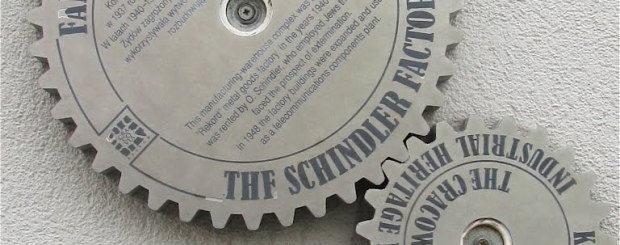How Spielberg’s “Schindler’s List” changed Krakow
Schindler’s List is a war drama made in 1993, directed by Steven Spielberg, which won 7 Oscars and three Golden Globes. It tells a true story of Oskar Schindler – German entrepreneur who came to Krakow to run a business, and ultimately saved approx. 1000 Jews who would have been killed in the labour camp in Plaszow.
Jews saved by Schindler wanted the world to hear their story so they proposed an idea of film to Spielberg. Spielberg chose Krakow to shoot a film because of the authentic scenery. Cracovians helped him immensely – they responded to the call for props (thanks to them more than 1,000 suitcases was collected), told the details of war times (the script was changed several times) and worked as an extras. That’s why Spielberg invited so called “Schindler family” for the first premiere of the film.
Research from the 90’s showed that most of Cracovians did not know where was the ghetto in their city during the Second World War. It was forgotten that before the Second World War approx. 70 thousand of Jews had lived in Krakow. Spielbergs team visit became a moral impulse to recall the past. Krakow began to deal with a painful history, a consciousness of Cracovians was changed. A revitalization program of Zablocie and Podgorze districts was started. Zablocie has always been an industrial district of our city and a place not worth visiting. Thanks to the fact that the world heard about Schindler again, city decided to buy his former factory which was a private at this time and create a modern and interactive museum describing the German occupation of the city.
In 2007 the authorities decided to donate the building of the former Enamelware Factory to Historical Museum of the City of Krakow, which has set up its branch here. The permanent exhibition “Krakow – Nazi Occupation 1939-1945” is the story of the fate of the inhabitants of the city during World War II, but also about the German occupiers, who appeared on 6th September 1939, and suddenly stopped centuries-long history of existence of Poles and Jews together.
The museum was opened in June 2010 and won the prestigious Sibyl Award (Museum Event 2010) and has become a place, which you have to visit when you come to Krakow. In addition, on 26.11.2013 Schindler’s Factory provided its collections for the blind and deaf. Audio or verbal description of visual content can be downloaded from the website to a mp3 player or mobile phone.
In the former “Emalia” factory authorities also created MOCAK Museum of Contemporary Art and the whole Zablocie district became more vivid and now attracts tourists, artists and investors. Another important effect of changes is the Ghetto Heroes Square. It has ceased to be a bus loop (which also proofs how the city has treated this place of memory) then became a very poignant monument.
Apart from all the criticism of the film which Spielberg received (e. g. subjective approach to history, Hollywood kitsch) it must be emphasized that nowhere else all over the world a movie has done so much changes. The history of the Jews became part of the history of the city again. The Schindler’s Factory Museum (a part of the Memorial Route created by the Historical Museum of Krakow) is now a very special place for the city and tourists.






